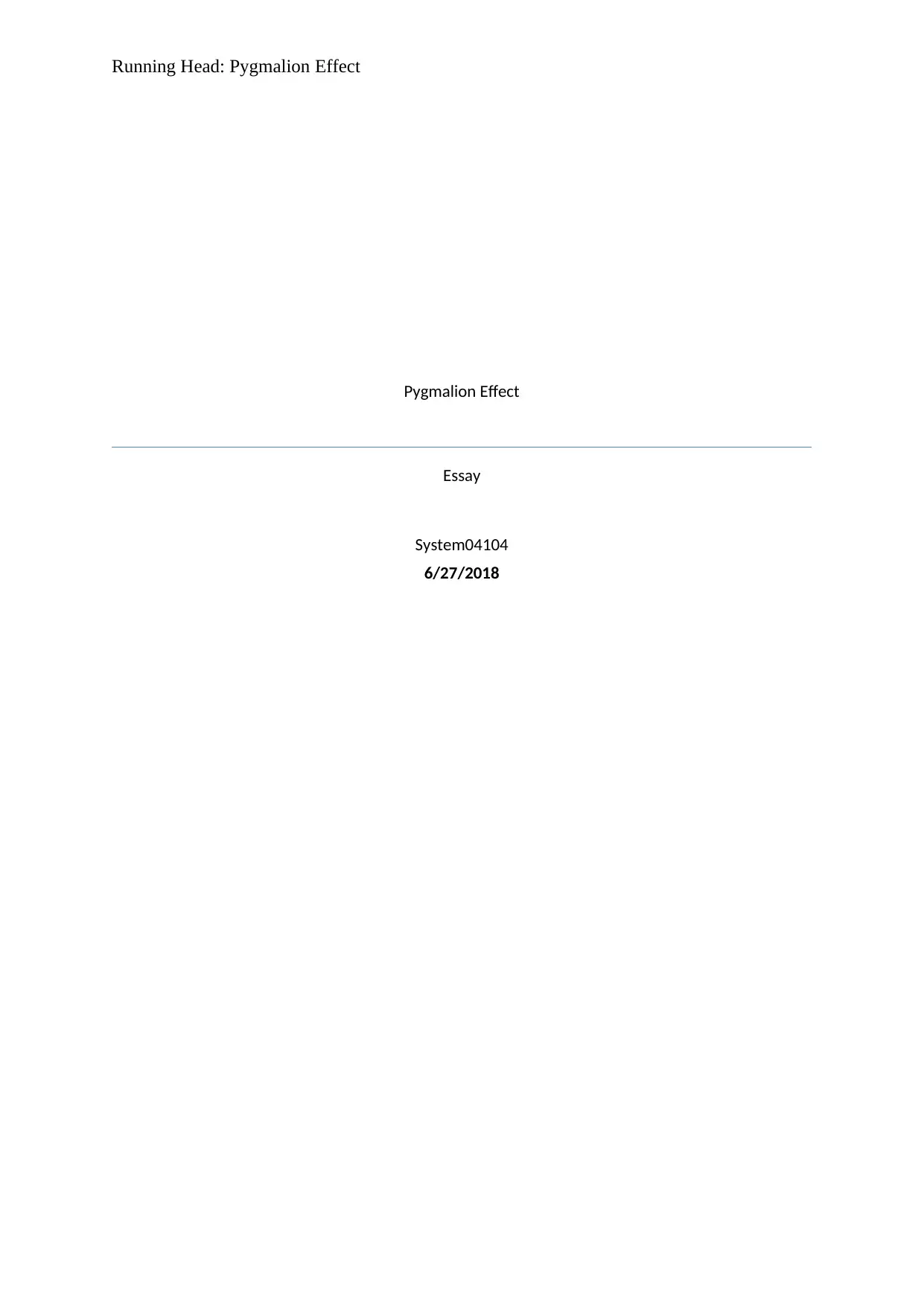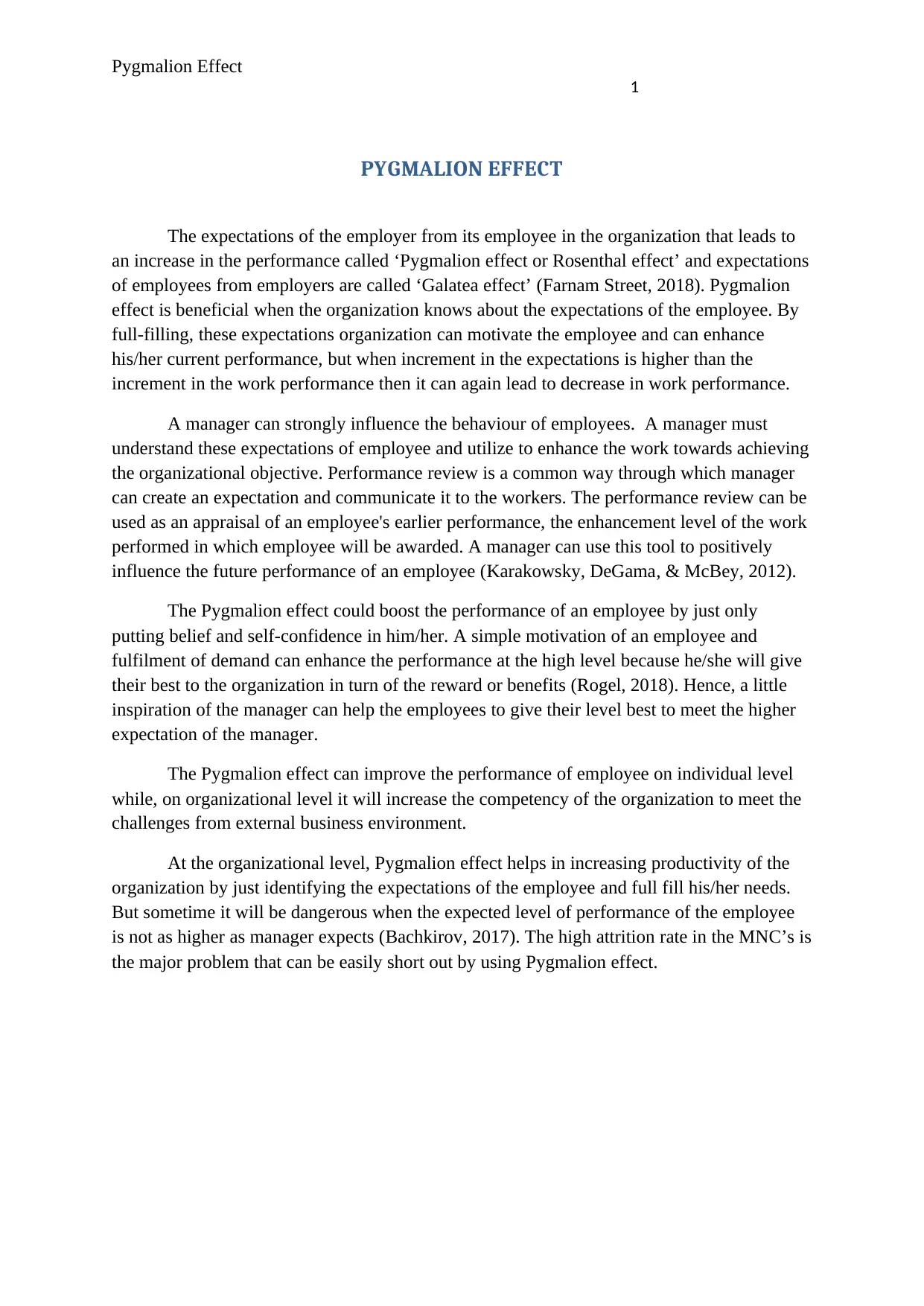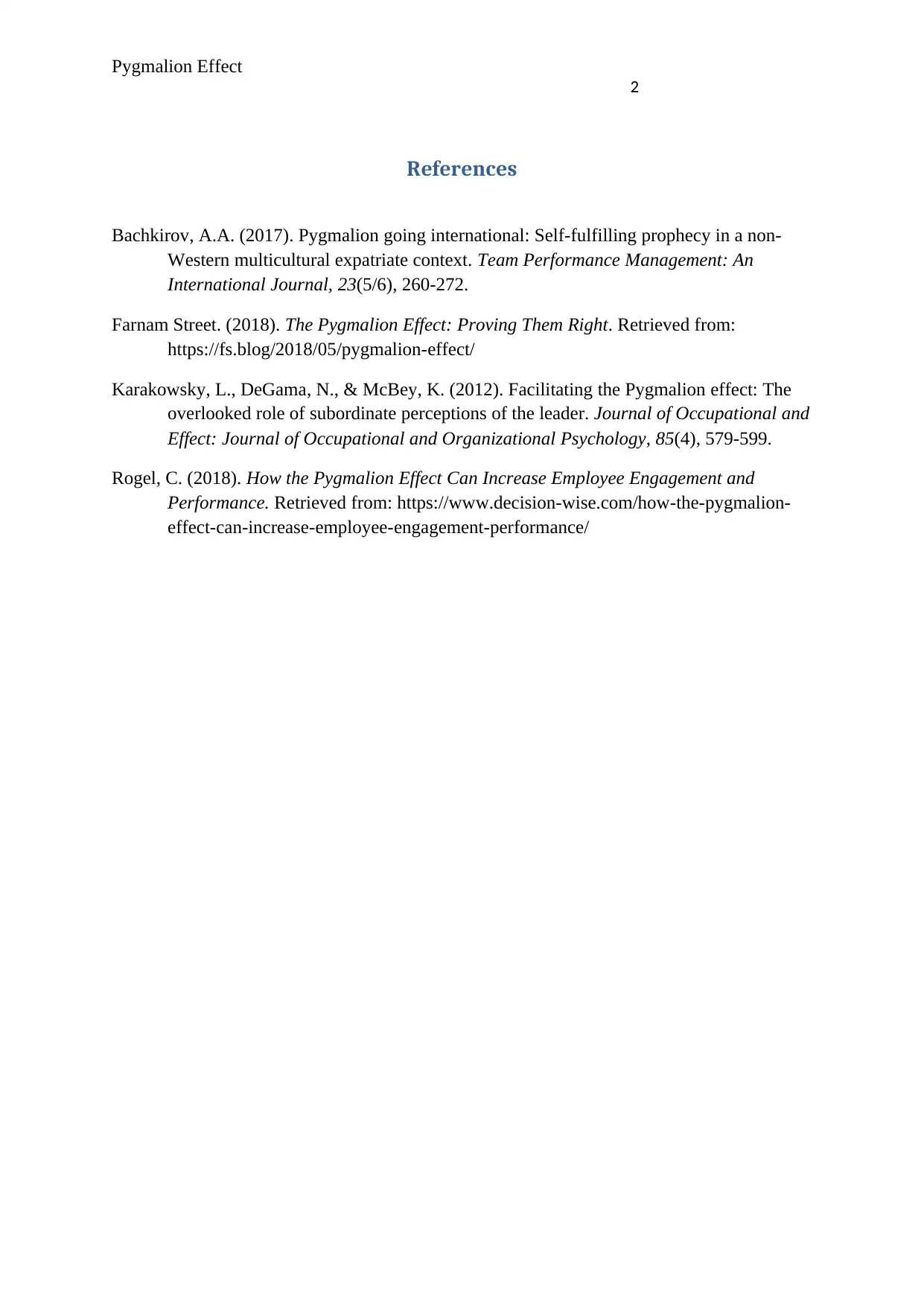Analyzing the Pygmalion Effect and its Impact on Employee Behavior
VerifiedAdded on 2023/06/10
|3
|560
|267
Essay
AI Summary
This essay discusses the Pygmalion Effect, also known as the Rosenthal Effect, which refers to the phenomenon where an employer's expectations of an employee influence the employee's performance. It also touches upon the Galatea Effect, which describes employee expectations of employers. The essay highlights how understanding and fulfilling employee expectations can enhance motivation and improve performance. It emphasizes the role of managers in creating and communicating expectations through performance reviews and fostering self-confidence in employees. The Pygmalion Effect can lead to increased individual employee performance and overall organizational competency, helping to address issues like high attrition rates in multinational corporations. However, the essay also cautions against setting performance expectations that are unrealistically high, as this can be counterproductive. The paper includes references to support its claims and provide further reading on the subject.
1 out of 3









![[object Object]](/_next/static/media/star-bottom.7253800d.svg)